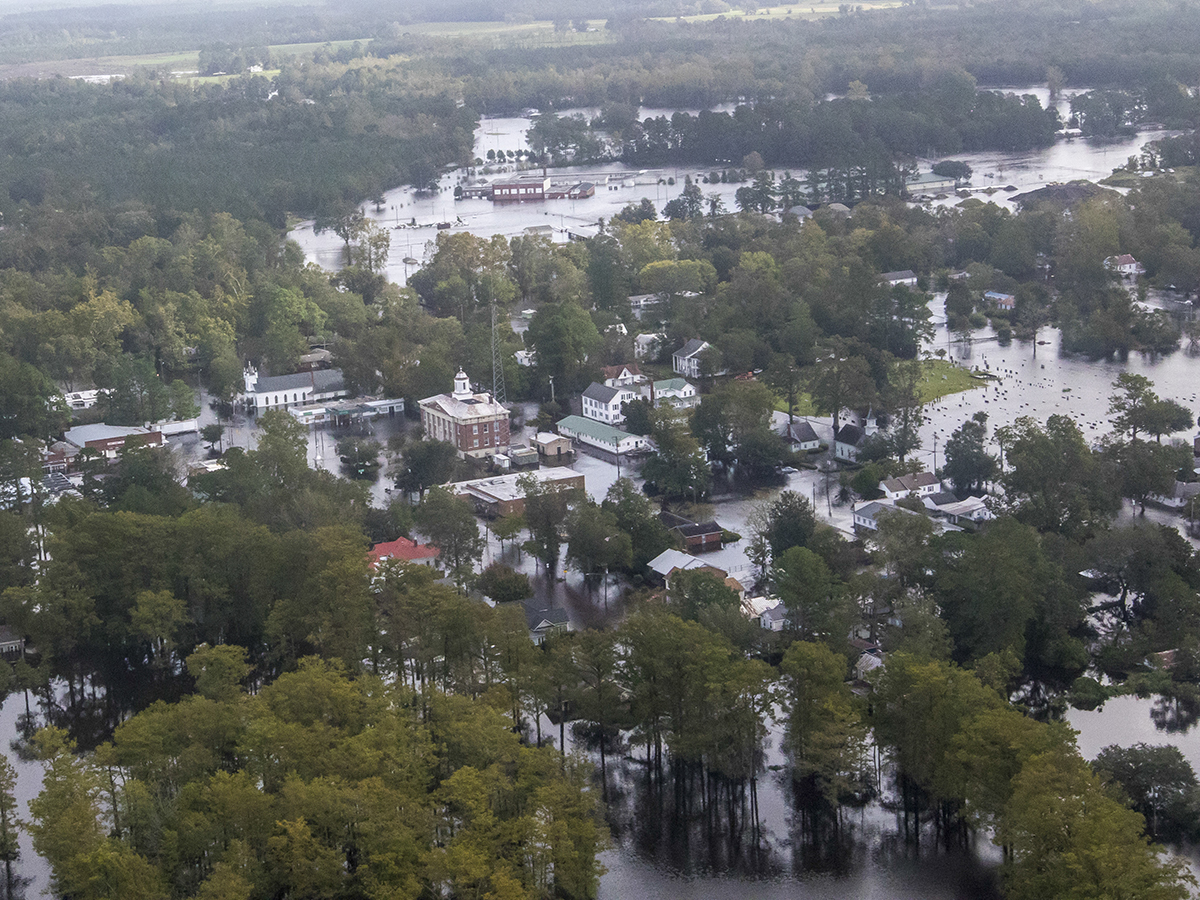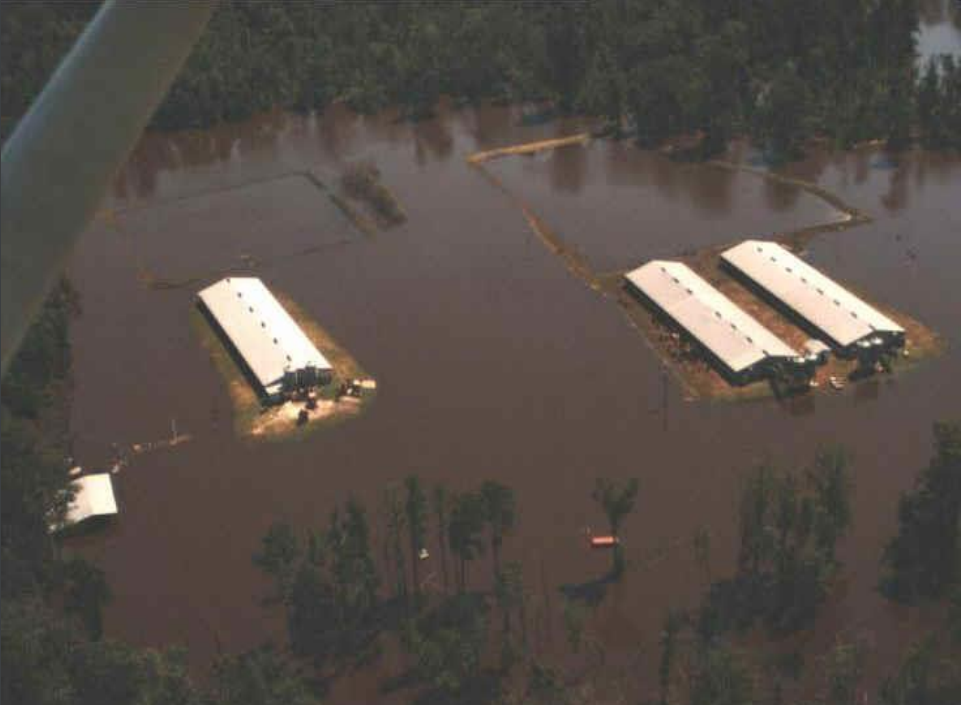
Climate change is causing hurricane-related flooding to increase — along with the cost to recover from these storms — and communities should prepare now.
That’s what two researchers recommended during a recent Duke University-hosted media briefing on hurricane preparedness and impacts.
Supporter Spotlight
“The biggest change in storm activity for North Carolina is not the frequency of landfalling hurricanes. It’s not even the intensity of these hurricanes. It’s the rainfall. It’s the amount of water that these storms contain,” said Dr. Megan Mullin of the Duke Nicholas School of the Environment.
Mullin, a professor of environmental politics who researches the politics of climate change, including local political response to climate risks, teamed up for the briefing last week with Dr. Lee Ferguson, an environmental chemist at Duke and one of the lead scientists investigating the Cape Fear’s Gen X contamination.
“Intensity of flooding is our biggest impact from the changes in storm behavior as a result of climate change, and that impact is reaching more broadly and getting more expensive,” Mullin said. “It’s getting more expensive for communities to clean up. It’s getting more expensive for the utilities. It’s getting more expensive for the farmers who will lose an entire year of crops and more expensive for individuals who are experiencing the disruptions.”
Communities are making progress planning for hurricanes, but obstacles remain, Mullin said, like lack of resources and urgency to recover and return to normalcy after a storm.
Ferguson is an associate professor of civil and environmental engineering who studies the effects of flooding and the potential for contamination from chemical plants, hog farms and wastewater treatment systems.
Supporter Spotlight
He explained that the state has contaminant sources that are active almost all the time, and there are always at least low-level inputs from these sources into waterways.
Gen X is an example of pollution from an industrial source but there are many others, such as per-and polyfluoroalkyl substances, or PFAS, which have multiple sources — industrial input, military activities and firefighting foam, Ferguson said. There are numerous other sources of contaminants, especially in the coastal plain, such as hog farms, industrial agriculture and municipal wastewater.
While these low-level inputs of contaminants are constant, with hurricane-related flooding, the spread of contamination is amplified.
Flooding was a major issue during Hurricane Florence in 2018. “It was, I think, the wettest hurricane that we’ve ever had in North Carolina,” Ferguson said.
Under those circumstances, land that would normally not be flooded are completely inundated. The floodwaters move contaminants from those normally dry areas into waterways. For example, if warehouses or industrial properties becomes flooded, that flood water would collect oil or other contaminants from the ground and carry it to waterways.
Another way pollutants can enter waterways during a flood is from wastewater treatment plants in low-lying areas, which Ferguson said is by design because the downhill flow makes it easier to collect wastewater.
“That presents a risk when we have flooding events,” because when these wastewater treatment facilities are inundated, there is both a massive amount of wastewater coming to those plants as well as an inundation of the treatment systems, which can lead to discharge.
Stormwater runoff is another source, although it’s usually relatively low volume and localized. When there’s a large hurricane that affects most of the eastern part of the state, the resulting stormwater runoff carries more contaminants into waterways.
The time it takes for a waterway to clear up after contamination depends on the level of pollution and the amount of rainfall. For small-scale river flooding, contamination can be cleared in a matter of days but for a storm like Hurricane Florence, when there is large-scale flooding, it can take weeks to months.
Eastern North Carolina has borne the brunt of many hurricanes, and contamination often flows toward the coast, Ferguson said.
“Certainly, low-lying communities that are along our rivers are at significant risk. One example, during Hurricane Florence we observed really significant flooding around the Trent River, near New Bern, and then also down the Cape Fear River from Fayetteville east to Wilmington.”
The floodwaters not only damaged property but also moved pollution from inundated areas into major waterways, and eventually into the ocean.

Problems can manifest in any community affected by floodwaters, but small communities along waterways are especially at risk, he said.
Ferguson added that the increased population on the coast presents major challenges, because, as coastlines are urbanized, resilience of the natural systems that act as buffers is reduced. Barrier Islands that are bulkheaded, for example, are less effective because they block the natural transport of sand. Maritime forests that can help serve as a buffer for both contamination as well as storm surge and wind energy are often lost with urbanization.
In many low-lying communities, Mullin said, flooding is part of the history, but now flooding has become more dangerous. It’s deeper, it’s longer lasting and it’s carrying contaminants to a greater degree and in higher concentrations.
On the immediate coast, the destruction of structures leaves debris that communities must remove because it can hurt the tourism-dependent economy, Mullin said. “You can’t have people coming to your beach and expect to walk barefoot on the beach when there’s rusty nails right on the beach. And this is becoming a real challenge for the oceanfront communities.”
Ferguson said that Hurricane Fran in the mid-1990s was a wake-up call not only in North Carolina but nationwide about the potential for large-scale agriculture to be a source of pollution — specifically, hog waste.
“Certainly, there’s a lot more attention paid in the scientific as well as the regulatory community to this issue since 1996,” Ferguson said.
Large hog farms and other industrial agriculture practices can create other concerns during floods, such as the potential for pathogens in downstream waters. Also, the biological and chemical oxygen demand that comes when a huge amount of organic matter is released into waterways can result in bacteria and algal blooms that then cause fish kills and other problems. The pollution can also include antibiotics, hormones and other additives administered to farm animals, he explained.
Contaminant-laden inundation resulting from Hurricane Florence was not on a scale of that seen from Hurricane Fran. Ferguson said his limited research indicates that farmers’ practices had since become more resilient. He said farmers appeared to have added protections ahead of the storm, such as moving animals to higher ground and relocating waste lagoons.
Mullin said there was a policy response after Hurricane Fran, including a moratorium on new hog waste lagoons and funding for buyouts. While many of the lagoons most at risk of catastrophic failure had been mitigated by the time of Florence, there are still old lagoons at risk.

Smaller towns often lack the financial and organizational capacity to properly address their hurricane-related problems.
Mullin explained that during her work with coastal officials and residents, they often talk about taking different paths, such as using living shorelines instead of bulkheads for protecting land and properties from the water, or changing their septic standards to not only deal with severe storms, but also increasingly chronic flooding resulting from sea level rise.
“They want to think creatively about infrastructure decisions, such as making sewage systems and drinking water systems more resilient to withstand future storms, but when the storm hits, those plans and those creative ideas tend to go out the window because they really just want to get the road back in order to be able to access essential services,” she said.
It’s a challenge to do the critical work of recovery in a way that also carves out a new future.
Doing things differently slows recovery down, Mullin said. “We rebuild in ways that lock in the old ways of doing things, which continue to be not resilient.”
Ferguson noted that while recovery is expensive and difficult, the more work toward resilience that a community can do, the better.
“While we certainly need to be able to recover from major storm events and the contamination that goes along with it,” he said. A better way to solve this problem is to build infrastructure, especially water and wastewater infrastructure, in a resilient way to withstand the climate-induced extreme weather and reduce the risk of major contamination during flooding.
“We need to be thinking about advanced treatment systems that can protect us not only against the contaminants that we know are there now, but the contaminants we might anticipate from future flooding events and future contamination,” he said.
Mullin added that the decisions on the future of a community need to be made in a just and equitable way.
Towns that use relief money to protect expensive homes on well-developed roads rather than helping residents in lower-value homes where there is poor infrastructure is an example of injustice, she said.
Ferguson and Mullin agreed that the state has a long way to go to get ready for the next big storm.
“It’s very difficult to be ready for something that we just can’t necessarily really anticipate the scope for, but I do think that we can move in the right direction by increasing again the resilience of some of our infrastructure,” Ferguson said.
Mullin said her top priority would be to pay for infrastructure improvement as part of recovery for the communities that are least able to do it themselves. When relief funds distributed after a storm, the money should be distributed most equitably, not most easily.







